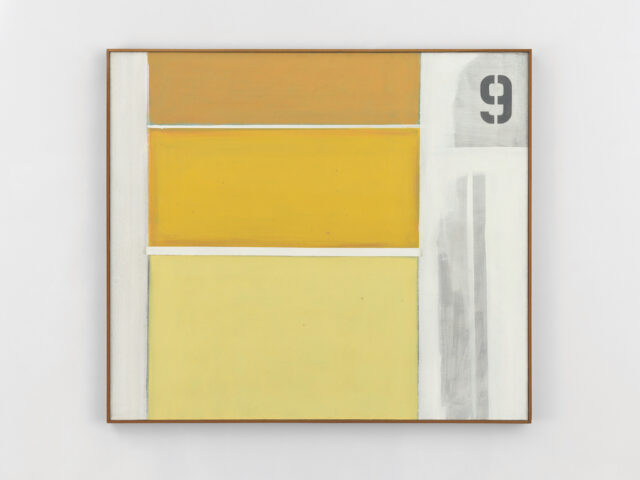
By Regina Weinreich
Obsessed with the sea and the ways mist played with light, artist James Howell made trips to the shore to photograph the diffused horizon, especially on foggy days. The photos inform Howell’s Series 10 paintings in a first-ever Long Island retrospective, which just opened at the Parrish Art Museum. A part-time resident of Montauk until his death in 2014, Howell made art challenging viewers to look at the dynamic possibilities of gray for rendering the colors of nature.
Howell’s time on the East End dates back to his mother’s home in East Hampton in the ’60s, when he met painter and art critic Fairfield Porter, who inspired him to use acrylics. The Leisurama cottage on Essex Street he bought with his second wife, D. Joy Howell, in the 2000s is a shrine to his late career, with his beach-misted photos, large white studio easel, rock collection and mini-fridge-sized closet stocked full with airtight cups of gray-hued acrylics. Even their cats, Russian Blues named One and Blue, were gray. “He discovered gray by leaving things out,” says D. Joy Howell, founder and president of the James Howell Foundation, showing the house to a visitor last June.
The foundation, located on Perry Street in Manhattan’s West Village, occupies a former horse stable once owned by the Fleischmann Company, the inventors of dry yeast. Paintings in various gray tones adorn the white walls; visitors can feel subtle, strategic atmospheric shifts. How many gradations? The answer is a matter of mathematics, say Parrish associate curators Scout Hutchinson and Kaitlin Halloran, who estimate up to 12,000 tones. Hand-drawn grids resembling the periodic table illustrate the way Howell showed his calculations of the curve of light descending. Trained in architecture and literature, Howell’s interests were philosophical, numerical and design-oriented, his decisions often made in consultation with a spirit guide.
Exploring Howell’s career in over 40 works, the Parrish presents early art from a period of figuration, through abstraction, to the final paintings in gray. With vastly different results, the trajectory matches that of Jackson Pollock’s path from figurative to abstract. Wanting only to be known for this final work, Howell gave away or destroyed much of his early art, says his widow. The Parrish exhibition offers a rare glimpse of color in Howell’s work, addressing the question: How does an artist immersed in nature go to vivid gray?
Pollock may have influenced his contemporary in other ways. Joy Howell says they briefly owned land near the titan of abstract expressionism in Springs. What would Pollock do? “He’d go his own way.”
Endless Limits: The Work of James Howell, 1962-2014, on view through February 8; parrishart.org





